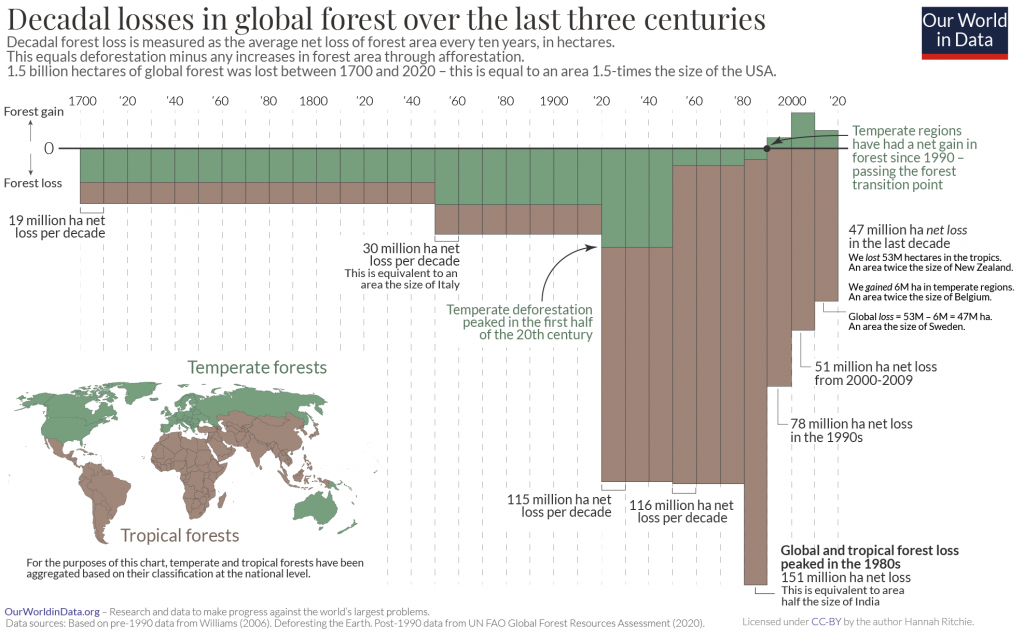How Sustainable Is Padauk Wood? Here Are the Facts
Impactful Ninja is reader-supported. When you buy through links on our site, we may earn an affiliate commission.
Learn more
Learn more
.
Hey fellow impactful ninja ? You may have noticed that Impactful Ninja is all about providing helpful information to make a positive impact on the world and society. And that we love to link back to where we found all the information for each of our posts. Most of these links are informational-based for you to check out their primary sources with one click. But some of these links are so-called "affiliate links" to products that we recommend. First and foremost, because we believe that they add value to you. For example, when we wrote a post about the environmental impact of long showers, we came across an EPA recommendation to use WaterSense showerheads. So we linked to where you can find them. Or, for many of our posts, we also link to our favorite books on that topic so that you can get a much more holistic overview than one single blog post could provide. And when there is an affiliate program for these products, we sign up for it. For example, as Amazon Associates, we earn from qualifying purchases. First, and most importantly, we still only recommend products that we believe add value for you. When you buy something through one of our affiliate links, we may earn a small commission - but at no additional costs to you. And when you buy something through a link that is not an affiliate link, we won’t receive any commission but we’ll still be happy to have helped you. When we find products that we believe add value to you and the seller has an affiliate program, we sign up for it. When you buy something through one of our affiliate links, we may earn a small commission (at no extra costs to you). And at this point in time, all money is reinvested in sharing the most helpful content with you. This includes all operating costs for running this site and the content creation itself. You may have noticed by the way Impactful Ninja is operated that money is not the driving factor behind it. It is a passion project of mine and I love to share helpful information with you to make a positive impact on the world and society. However, it's a project in that I invest a lot of time and also quite some money. Eventually, my dream is to one day turn this passion project into my full-time job and provide even more helpful information. But that's still a long time to go. Stay impactful,Affiliate Disclosure
Why do we add these product links?
What do these affiliate links mean for you?
What do these affiliate links mean for us?
What does this mean for me personally?
![]()
Padauk is native to tropical forests, some of which host the most diverse wildlife in the world. And as these forests and their biodiversity play a vital ecological role, the loss of wildlife habitat due to logging raises questions about its sustainability. So we had to ask: How sustainable is it to buy products made out of padauk wood?
Padauk could be a sustainable wood thanks to trees’ carbon sequestration, carbon storage, and natural durability. However, padauk wood with an Asian or African origin could be unsustainable due to the widespread illegal logging, its adverse impact on wildlife, and long transportation distances.
In this article, we’ll walk you through the life-cycle of padauk wood used for furniture, flooring, and musical instruments. Then, we evaluate its sustainability, potentials, and shortfalls. And in the end, we’ll show you tips for buying sustainable padauk wood.
Here’s How Sustainable Padauk Wood Is
Padauk is a tropical hardwood desired for fine furniture, flooring, and musical instruments. Though none of the padauk species are listed as endangered by CITES, widespread illegal logging in Asia is causing a rapid disappearance of the trees, making it an increasingly unsustainable option. However, as a thumb of rule, wood sourced from sustainably managed forests is better for the environment than plastic.
“Sustainable: The ability to be maintained at a certain rate or level | Avoidance of the depletion of natural resources in order to maintain an ecological balance”
Oxford Dictionary
To understand the sustainability of padauk wood, we assess the life-cycle of furniture, flooring, or musical instruments. This life-cycle assessment (LCA) is a method to evaluate the environmental impacts of each stage in a product’s life-cycle, from the making to the recycling. Over the years, companies have strategically used LCA to research and create more sustainable products.
In this article, we’ll use the cradle-to-grave perspective of the LCA, examining the five stages of the life-cycle of furniture made with padauk wood.
| The life-cycle stages of padauk wood | Each stage’s sustainability |
| Growing of padauk wood | Growing padauk in its native tropical forests is sustainable, but logging practices are a cause for concern, especially in Asia. |
| Manufacturing of padauk wood | Turning padauk wood into furniture has a relatively low carbon footprint because wood waste can be recycled fully as by-products or biomass pellets to offset the carbon emissions during harvesting and processing. |
| Transporting of padauk wood | Transporting is a relatively carbon-intensive stage in the life-cycle of padauk furniture due to the long distances from its source (mostly Africa or Asia) and emissions associated with operating the hauling vehicles that take timber to sawmills and factories, then furniture to stores. |
| Usage of padauk wood | Using padauk furniture can be sustainable thanks to the carbon capture during the products’ long life. |
| End-of-life of padauk wood | The end-of-life stage for padauk furniture is sustainable when the wood is reused or burned as bioenergy. |
We’ll say that padauk wood can be sustainable. However, the actual environmental impact of a particular product, like a table or a guitar, depends on many factors, especially the forest management practices, the wood’s origin, and thus the distance and mode of transportation. Let’s dive deeper into each stage and find out how it can be more sustainable.
How Sustainable Is the Growing Padauk Wood
Growing padauk in its native tropical forests is sustainable, but logging practices are a cause for concern, especially in Asia.
What Type of Wood is Padauk and What Does This Mean for Sustainability
Padauk is an exotic tropical hardwood, loved and used by many, including famous kings. The trees grow very tall at a much faster rate than hardwood trees do in temperate-zone forests.
How Sustainable Does Padauk Wood Grow
The main problem that raises alarms about the sustainability of harvesting padauk wood is the diminishing natural habitat, especially due to the widespread illegal logging in Asia.
- Diminishing critical natural habitats: The high demand for padauk, especially in China, drives unsustainable and often illegal logging practices in Southeast Asia’s primary tropical forests. For example, a 2014 report from the Environmental Investigation Agency predicted that padauk could be logged to commercial extinction in just a few years in Myanmar’s tropical rain forests. Tropical rainforests have incredible and unmatched biodiversity. When loggers bulldoze roads into those pristine forests to seek the high-value padauk trees, they kill wild animals and threaten their habitat, leading to mass distinction of plants and animals that have occurred on Earth in 65 million years.
However, when padauk trees are grown in sustainably managed forests with more availability (such as across Africa), the carbon sequestration, the short duration of growth, and the agroforest potential means using the wood could be relatively sustainable.
- Carbon sequestration: The carbon sequestration potential of padauk trees is significant. As they grow, they absorb CO2 from the atmosphere while releasing oxygen. During their lifespan of around 60 years, they act as a carbon sink. This means that they are taking greenhouse gases out of the atmosphere, helping to mitigate the climate crisis. And they can store a lot, growing as tall as 130 feet with a truck of 4 feet in diameter.
- The short duration of growth: As a tropical tree, padauk grows faster than the average hardwood tree in a temperate forest. Under favorable conditions, padauk trees in Singapore can generally reach over 100 feet in 11 years. The average annual growth rate is 4 feet (1.2 meters). That is about three times faster than, for example, an average white oak tree. That means padauk trees are available for commercial logging in a much shorter time.
- Agroforestry land usage: Padauk trees are nitrogen-fixing, thus, suitable for agroforestry systems. They can provide shade for coffee and other crops. Multi-cropping makes better use of the land while increasing the profits of planting padauk trees.
Where Is Padauk Wood Usually Grown
Padauk trees grow in tropical climates, thriving in dry forests and wet forests, including some of the world’s most bio-diverse rainforests. You can find padauk trees in Asia, Africa, and even the southern tip of the U.S. (i.e., Florida).
While padauk trees are still fairly available in Africa, they are becoming rarer and rarer in Asia. Illegal logging for its timber, alongside other high-value wood like mahogany or rosewood, is rampant in Southeast Asia, prominently Myanmar and Thailand, driving the species – often known as Burmese padauk – to commercial extinction. The region has some of Earth’s oldest forests, and cutting down padauk trees, while often not killing the trees, disrupts the forests’ wildlife which is diverse, rare, and, in some cases, unique to these forests and nowhere else on the planet.
Improperly managed logging (including illegal activities) can cause many problems for forest equality and diversity. One example is when loggers only cut down the biggest and tallest trees. That pattern would cause a reduction in the genetic diversity and quality of the trees within the stand, leading to gradual degradation of tree quality.
In total, logging of forestry products from plantations accounts for 26% of forest loss, which is a combination of deforestation and forest degradation. However, the loss in bio-diverse forests in tropical climates is more significant (and sometimes less properly recorded) than in temperate, well-managed logging forests.

How Sustainable Is the Manufacturing of Padauk Wood
Turning padauk wood into furniture has a relatively low carbon footprint because wood waste can be recycled fully as by-products or biomass pellets to offset the carbon emissions during harvesting and processing.
The first step of manufacturing padauk furniture involves cutting down trees and turning them into lumber in a sawmill. The carbon emissions here come from electricity usage.
The next step is to dry lumber and then turn it into furniture. Despite being a high-density wood, padauk dries very well in the kiln and with a minimum weight loss, making the process more energy-efficient. Besides, a high proportion of energy can come from burning wood waste instead of fossil fuel. Padauk can also be air-dried, requiring no non-renewable energy. In most cases, the wood would be air-dried or kiln-dried and sometimes made into furniture before shipping to North America or other markets.
Tropical woods like padauk do not require surface treatment thanks to a high content of natural oils, protecting the wood from fungi and pests.
How Sustainable Is the Transportation of Padauk Wood
Transporting is a relatively carbon-intensive stage in the life-cycle of padauk furniture due to the long distances from its source (mostly Africa or Asia) and emissions associated with operating the hauling vehicles that take timber to sawmills and factories, then furniture to stores.
As padauk timber in the U.S. often comes from West Africa, furniture made with this wood would have a higher carbon footprint than furniture made with regionally available wood, like maple or oak.
The actual emission during the transporting stage depends on the type of vehicles used, the fuel they need, and the distance the wood travels. Calculations made by the Norwegian Forest and Landscape Institute showed that smaller wood hauling trucks emitted more CO2 per transported cubic meters of timber: 1.25 times more than larger wood hauling trucks, 1.3 times more than sea vessels, and six times more than freight trains. Therefore, the sustainable transportation option would be rail or large trucks running on biofuel. You can check with your wood suppliers how their products are transported to and within the U.S. and opt for the more sustainable option.
The environmental cost of freighting African padauk is also reflected in the comparatively high price of padauk woods in America. For example, the cheapest of all padauk woods, African padauk still costs as much as the most prized black walnut.
How Sustainable Is the Usage of Padauk Wood
Using padauk furniture can be sustainable thanks to the carbon capture during the products’ long life.
Padauk is exceptionally stable and highly durable. Padauk tree extracts from the soil chemical compounds which give the heartwood a rich red color and protect it from fungal and bacterial decay, contributing to its durability. Its color, stability, and durability make it a popular option for high-end furniture. For example, padauk flooring can last for 25 years and longer with preservative treatments.
When wood is decayed, either naturally in the forest or because of damage caused by usage at home, the carbon stored in the wood is released back to the atmosphere. Therefore, long-lasting furniture can be considered as a good way of keeping the carbon out of the atmosphere. If the wood is then reclaimed for making another piece of furniture, its positive carbon storage environmental impact is even higher.
How Sustainable Is the End-of-Life of Padauk Wood
The end-of-life stage for padauk furniture is sustainable when the wood is reused or burned as bioenergy.
There are a few scenarios for wood products – furniture, flooring, and household items – at the end of their life.
They can end up in landfills and don’t decompose. In this case, it keeps its role as carbon storage.
Wood products can also be upcycled and reused, extending their role as carbon storage and reducing the fossil CO2 emitted as much as four times when comparing, for example, a recovered hardwood flooring with a new one. New wood products often travel much further to their markets, cross-continent in the case of padauk, compared with recovered wood products. The latter is typically made in urban centers and sold locally, which lowers the transportation environmental burdens.
In another end-of-life scenario, products like a padauk table can be burned for biomass energy displacing coal or natural gas in generating electricity.
With smaller household items, like a doorknob or a small chair, the offset won’t be as high as there is much less waste for burning. However, if such products are made from manufacturing wood waste as by-products, their carbon footprint is minimal.
How Can You Buy Padauk Wood More Sustainably
The key to sustainably buying padauk is to check on relevant environmental and original certifications. As some padauk comes from tropical forests prone to intensive poaching, only buy the wood if you are certain that it has reliable credentials, which include:
An FSC certification ensures that the padauk wood comes from responsibly managed forests that provide environmental, social, and economic benefits. You can get FSC-certified African padauk from countries like Tanzania. There are no FSC-certified forests in Myanmar, so you won’t be able to source from the country, padauk, teak, or any other woods with an FSC certification.
PEFC’s approaches to sustainable forest management are in line with protecting the forests globally and locally and making the certificate work for everyone. Getting a PEFC certification is strict enough to ensure the sustainable management of a forest is socially just, ecologically sound, and economically viable but attainable not only by big but small forest owners.
Burmese padauk urgently needs CITES protection, and it has been classified as a vulnerable species by the International Union for Conservation of Nature and Natural Resources. Thus, if you want to buy padauk wood, opt for the more available and sustainable African species.
Why Is It Important to Buy More Sustainable Wood
Buying sustainable wood also means helping to prevent illegal or unsustainable logging, which harms the forests’ biosystems and accelerates climate change.
Logging of forestry products from plantations accounts for 26% of forest loss. Cutting down trees for wood has a lesser impact on carbon storage than digging up the whole forest floor and turning it into farms or mines. However, if logging is not sustainably managed, it can badly damage wildlife.
When logging happens in tropical forests – the bio hotspots of our planet – the biodiversity loss can be much more damaging. Subtropical and tropical forests are packed with unique wildlife – endemic mammals, birds, and amphibians. The displacement of such wildlife during poorly managed logging would be a major contributor to global biodiversity loss.
Sustainable management of forests also means that trees are cut down for timber only when they are mature. These trees will then be able to regrow and eventually replace the loss of canopy, absorb carbon from the atmosphere and reduce the effect of climate change.

Final Thoughts
You can buy sustainable furniture made from padauk wood as long as the material comes from sustainably managed forests. Padauk is, however, an imported tropical wood, which has a higher carbon footprint than hardwood from temperate forests in the U.S. And with the widespread poaching in Southeast Asia, padauk from that region is generally not sustainable. If you have to use padauk, opt for timber from other places like Africa. Also, make sure you use any padauk furniture for as long as you can, upcycle the material to extend its usage, and arrange for it to be recycled fully.
Stay impactful,

Sources
- CITES: Tree Species Programme
- Reuters: Ditch metal and plastic and turn to wood to save the planet, says U.N.
- Science Direct: Life-cycle assessment (LCA)
- MIT SMR: Strategic Sustainability Uses of Life-Cycle Analysis
- WOOD Magazine: PADAUK
- EIA – International: MYANMAR’S ROSEWOOD CRISIS
- Rainforest Relief: Guidelines for Avoiding Wood from Endangered Forests
- THE WOOD DATABASE: AFRICAN PADAUK
- Plants For A Future: Pterocarpus indicus – Willd.
- Impactful Ninja: How Sustainable Is White Oak Wood? Here Are the Facts
- The Guardian: Surge in illegal logging by Chinese in Myanmar alarms activists
- Mongabay: Smuggled to death: how loopholes and lax enforcement have sealed the fate of Siamese rosewood
- Mongabay: Rainforests in Asia
- Our World in Data: Deforestation and Forest Loss
- Wood Working Network: African Padauk
- Natustyrelsen: Purchasing Tropical Timber
- Impactful Ninja: How Sustainable Is Maple Wood? Here Are the Facts
- Science Norway: Larger logging trucks give less CO2 emissions
- Impactful Ninja: How Sustainable Is Black Walnut Wood? Here Are the Facts
- CANADIAN WOODWORKING & HOME IMPROVEMENT: WOODS TO KNOW: PADAUK
- FANTASTIC FLOOR: Padauk Hardwood Flooring
- Research Gate: Life cycle primary energy and carbon analysis of recovering softwood
- Forest Stewardship Council
- FSC: Newly Available FSC 100% Hardwoods from Tanzania
- FSC: FSC Statement on Myanmar’s Escalating Crisis
- Program for Endorsement of Forest Certification
- CITES: CONVENTION ON INTERNATIONAL TRADE IN ENDANGERED SPECIES OF WILD FAUNA AND FLORA
- IUCN RED LIST: Pterocarpus indicus
- Our World in Data: Epidemic Mammal Species




